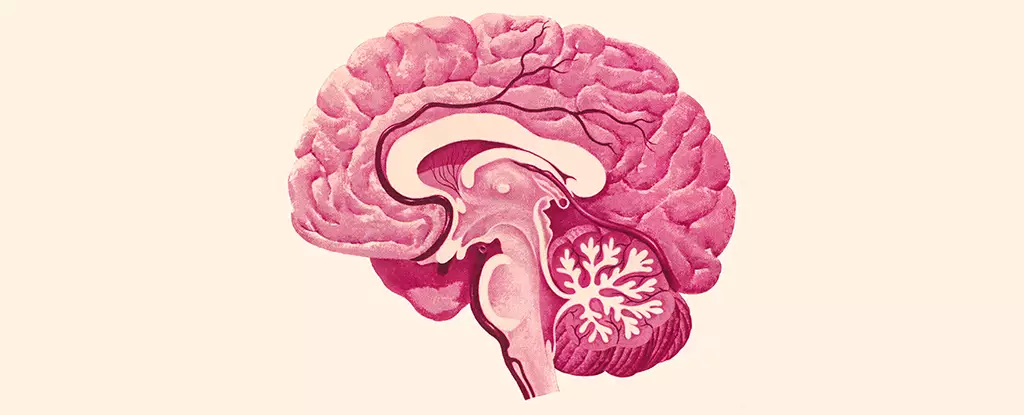Herpes simplex virus type 1 (HSV-1) is widely recognized for its role in causing cold sores, yet its implications for the brain and central nervous system have often been underappreciated. New research sheds light on how HSV-1 invades brain structures and what this means for our understanding of related neurological disorders. Recent findings from a collaborative study by researchers from the University of Colorado and the University of Bourgogne illuminate the virus’s pathways and its impact on various brain regions.
[h2]Mapping the Pathways of Infection: How HSV-1 Enters the Brain[/h2]
One of the critical advancements of this study is elucidating the two primary pathways through which HSV-1 can infiltrate the central nervous system: via the trigeminal nerve and the olfactory nerve. Despite this clarity on entry points, the specific mechanisms through which the virus disseminates throughout the brain remain uncertain. Neurologist Christy Niemeyer emphasizes, “Identifying how HSV-1 can get into the brain and what brain regions are vulnerable is key in understanding how it initiates disease.” This statement captures the urgency of deciphering these pathways to further discern their implications for neurodegenerative diseases.
The investigation utilized mouse models to better visualize the distribution of HSV-1 in the brain, revealing that various critical areas—including the brain stem and the hypothalamus—are notably affected by the virus. The brain stem plays a vital role in controlling heart and respiratory rates, while the hypothalamus is integral to regulating emotions, sleep patterns, and metabolic processes. Understanding these impacts opens up multifaceted conversations about the virus’s role in broader neurological health.
Potential Consequences of HSV-1 Infection in Brain Function
Intriguingly, researchers found that while areas like the hippocampus—associated with memory formation and navigation—and the cortex—linked to attention and memory—remained largely unaffected, the inflammation triggered by HSV-1 appears substantial. The study closely examined the behavior of microglia, the brain’s innate immune cells, which displayed significant activity and inflammation within the context of the infection. This persistent state of immune response suggests that the impact of HSV-1 infection may be ongoing, even after the initial presence of the virus has been resolved.
Niemeyer notes that although full-blown encephalitis—a severe inflammation affecting the entire brain—was not induced in the observed cases, the damaging effects of HSV-1 on brain function cannot be overlooked. “Even though the presence of HSV-1 is not causing full-blown encephalitis in the brain, it can still affect how these regions function,” she warns. The findings underline the importance of understanding not only the virus itself but also the immune responses that arise from such infections, which may lead to lasting cognitive impairment.
Linking HSV-1 to Neurodegenerative Diseases: A Pivotal Intersection
The intersection between HSV-1 infections and neurodegenerative diseases, particularly Alzheimer’s disease, is of heightened interest, especially given the speculative suggestions in recent studies. Potential correlations may exist where chronic inflammation—exacerbated by microglial activity in the context of HSV-1—contributes to the onset or progression of diseases like Alzheimer’s. As Niemeyer states, “Persistently inflamed cells can lead to chronic inflammation, a known trigger for a number of neurological and neurodegenerative diseases.” This assertion could provide a foundation for future investigations aimed at determining the role of HSV-1 in the pathophysiology of such diseases.
What’s notable about this research is its potential to reshape our understanding of not only the direct impacts of viral infections like HSV-1 on individual brain regions but also their broader implications for mental health and cognitive functioning. As studies continue to explore the intricate connections between viral infections, inflammation, and neurodegenerative conditions, we may glean deeper insights that could inform therapeutic strategies and public health efforts moving forward.
The unveiling of the pathways and effects of HSV-1 on brain health is an important scholarly contribution that strengthens the nexus between virology and neurology. It highlights the need for ongoing study into how common viral infections can influence long-term brain health and the potential risk factors they present for neurodegenerative diseases. As researchers delve deeper into these connections, the full impact of HSV-1 may become clearer, paving the way for novel preventative strategies that could protect cognitive function across the lifespan.


Leave a Reply